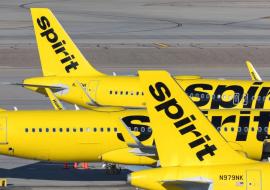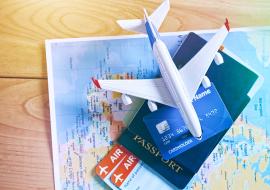IATA Cuts 2010 Airline Loss Forecast in Half


The International Air Transport Association (IATA) has cut its loss forecast for major airlines for 2010 to $2.8 billion, compared to the $5.6 billion loss forecast in December 2009. IATA said the improvement is largely driven by a much stronger recovery in demand seen by year-end gains that continued into the first months of 2010. Relatively flat capacity translated into some yield improvement and stronger revenues.
IATA also lowered its 2009 loss estimate to $9.4 billion from the previously forecast $11.0 billion loss. It said improvements are driven by economic recovery in the emerging markets of Asia-Pacific and Latin America, whose carriers posted gains in international passenger demand of 6.5 percent and 11 percent respectively in January. North America and Europe are lagging with international passenger demand gains of 2.1 percent and 3.1 percent respectively for the same month.
IATA said passenger demand (which fell by 2.9 percent in 2009) is expected to grow by 5.6 percent in 2010. This is an improvement on the previous forecast in December of 4.5 percent growth. Cargo demand (which fell by 11.1 percent in 2009) is expected to grow by 12 percent in 2010. This is significantly better than the previously forecast 7 percent growth. Airlines kept capacity relatively in line with demand throughout 2009. A strong year-end recovery pushed load factors to record levels when adjusted for seasonality. By January the international passenger load factor was 75.9 percent while cargo utilization was at 49.6 percent.
Tighter supply and demand conditions are expected to see yields improve – 2 percent for passenger and 3.1 percent for cargo. This is a considerable improvement from the precipitous 14 percent fall experienced by both in 2009. Premium travel, while slower to recover than economy travel, now appears to be following a cyclical recovery in volume terms. But it is still 17 percent below the early 2008 peak. Premium yields, which are 20 percent below peak, may be suffering a structural shift.
With improved economic conditions, the price of fuel is rising. IATA raised its expected average oil price to $79 per barrel from the previously forecast $75. That is an increase of $17 per barrel on the $62 average price for 2009. The combined impact of increased capacity and a higher fuel price will add $19 billion to the industry fuel bill bringing it to an expected $132 billion in 2010. As a percentage of operating costs, this represents 26 percent, up from 24 percent in 2009.
IATA said airline revenues will rise to $522 billion. That is $44 billion more than previously forecast and a US$43 billion improvement on 2009. At the same time, IATA reported that regional differences in airline prospects are sharp. Asia-Pacific carriers will see the $2.7 billion 2009 loss turn to $900 million in profits on the back of a rapid economic recovery being driven by China.
Latin American carriers will post an $800 million profit for the second consecutive year. The region’s economies are less debt-burdened than the U.S. or Europe. Economic ties to Asia helped isolate the region from the worst of the financial crisis. European carriers will post a $2.2 billion loss the largest among the regions. This reflects the slow pace of economic recovery and faltering consumer confidence. Demand is expected to grow by 4.2 percent in 2010. Intra-European premium travel is expected to recover more slowly. In December it remained 9.7 percent below previous year levels.
North American carriers will post the second largest loss at $1.8 billion. The jobless economic recovery continues to burden consumer confidence. Demand is expected to improve by 6.2 percent in 2010. But with intra-North America premium travel still down 13.3 percent as of December, the region remains in the red.














